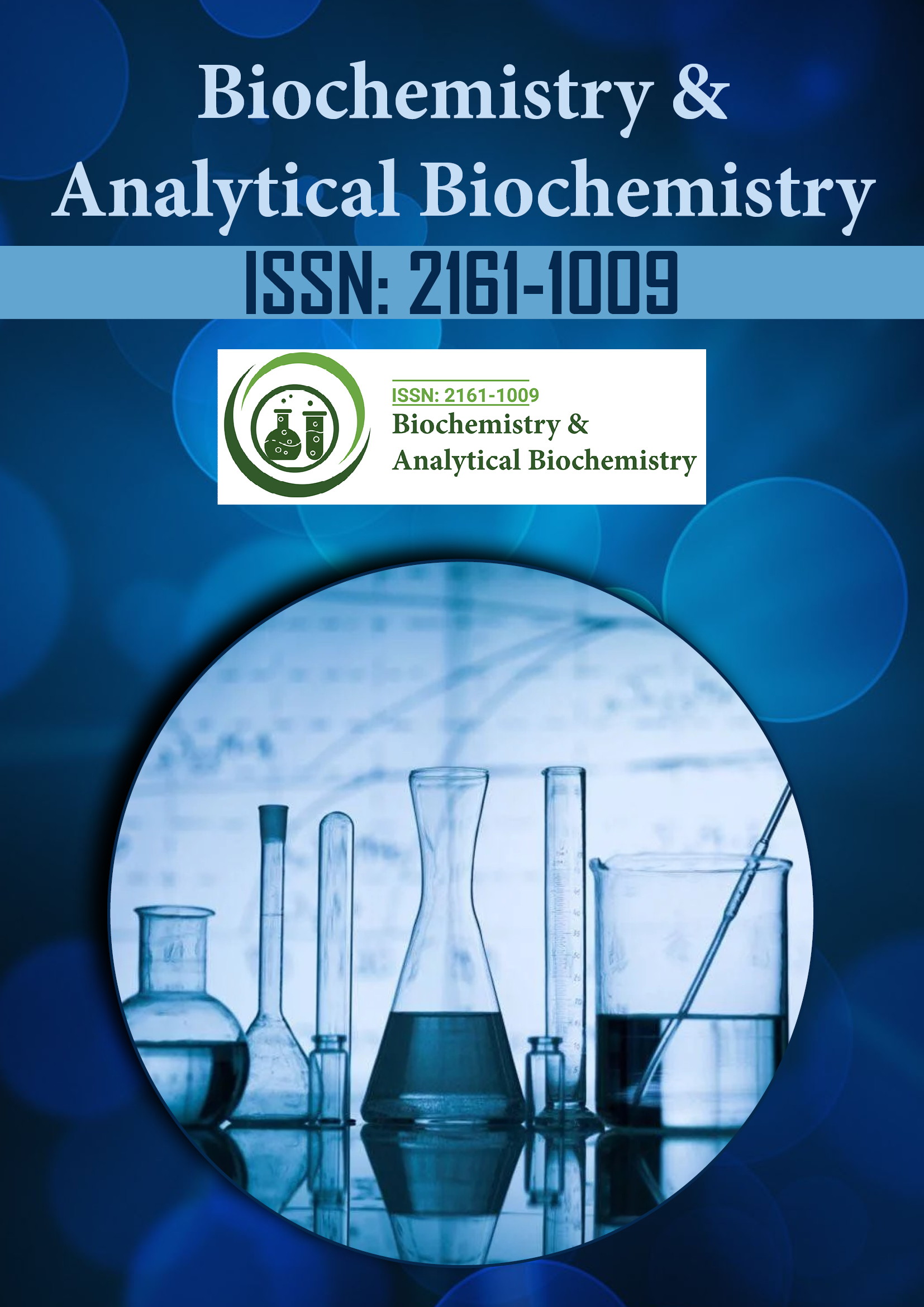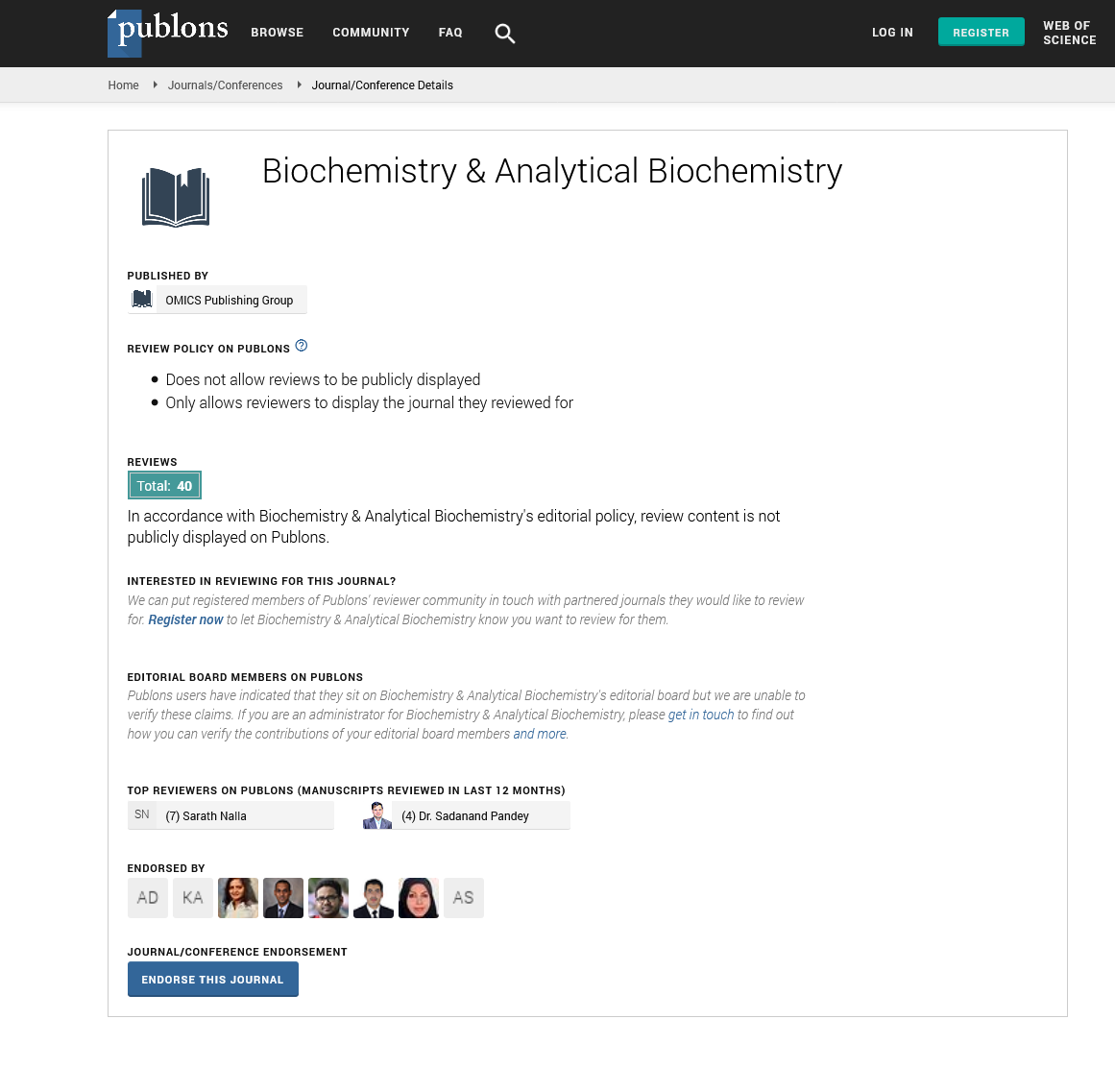Indexed In
- Open J Gate
- Genamics JournalSeek
- ResearchBible
- RefSeek
- Directory of Research Journal Indexing (DRJI)
- Hamdard University
- EBSCO A-Z
- OCLC- WorldCat
- Scholarsteer
- Publons
- MIAR
- Euro Pub
- Google Scholar
Useful Links
Share This Page
Journal Flyer

Open Access Journals
- Agri and Aquaculture
- Biochemistry
- Bioinformatics & Systems Biology
- Business & Management
- Chemistry
- Clinical Sciences
- Engineering
- Food & Nutrition
- General Science
- Genetics & Molecular Biology
- Immunology & Microbiology
- Medical Sciences
- Neuroscience & Psychology
- Nursing & Health Care
- Pharmaceutical Sciences
Perspective - (2022) Volume 11, Issue 8
Regulation in Gene Expressions by Multicellular Organisms
Li Yang*Received: 18-Aug-2022, Manuscript No. BABCR-22-18023; Editor assigned: 22-Aug-2022, Pre QC No. BABCR-22-18023 (PQ); Reviewed: 08-Sep-2022, QC No. BABCR-22-18023; Revised: 15-Sep-2022, Manuscript No. BABCR-22-18023 (R); Published: 22-Sep-2022, DOI: 10.35248/2161-1009.22.11.450
Description
A gene is a section of DNA that codes for a specific protein. DNA is the cell's information database and is found within the cell nucleus. It contains all of the critical genetic instructions for producing proteins required by our cells. Each gene contains a unique set of instructions, which are usually encoded and used for a specific function or protein. The process by which the instructions in our DNA are converted into a functional product, such as a protein, is known as gene expression. This is a tightly coordinated process that allows a cell to respond the changes in its environment. During gene expression, translation converts genetic codes from the DNA code into proteins.
The process of an organism's genetic makeup as physical traits is depicted by genetic expression. The information flows from genes to proteins during this process. Let us use the Keratin Genes (KG) as an example to better understand this topic. Keratin is a protein that promotes the growth of our hair, nails, and skin. In most cases, these things grow at a constant rate as our hair, nails, and skin wear down over time. Excessive keratin production can result in a lot of hair on the skin, dry and hard skin, and long nails. To avoid this, the keratin gene's expression must be regulated.
Regulation of gene expression refers to the various mechanisms by which our cells manage the amount of protein produced by our genes. Despite the fact that all cells in a multicellular organism carry the same genes, they become specialized cells with distinct functions that are regulated by the unique expression of the genes they carry. This study discusses gene expression regulation in prokaryotic and eukaryotic organisms. Because of their DNA structures and cellular compartmentalization, prokaryotes primarily use activators and repressors to turn their genes on and off, whereas eukaryotic gene expression involves many regulatory steps. The primary point of regulation in eukaryotic cells occurs during transcription initiation, via chromatin modifications and transcription factor interactions. The study also discusses the unique structural motifs of various transcription factors as well as epigenetic control of gene expression.
Proteins must be synthesized at the correct time for a cell to function properly. All cells use information encoded in their DNA to control or regulate protein synthesis. Gene expression refers to the process of turning on a gene to produce RNA and protein. Each cell controls when and how its genes are expressed, whether in a simple unicellular organism or a complex multicellular organism. To accomplish this, a mechanism must be in place to control when a gene is expressed to produce RNA and protein, how much protein is produced, and when it is time to stop producing that protein because it is no longer required. Gene expression regulation conserves both energy and space.
Because it would take a significant amount of energy for an organism to express every gene all of the time, it is more energy efficient to turn the genes on only when they are needed. Furthermore, expressing only a subset of genes in each cell saves space because DNA must be unwound from its tightly coiled structure in order to be transcribed and translated. If every protein was expressed in every cell all of the time, cells would have to be enormous. The regulation of gene expression is extremely complicated. Failures in this process are harmful to the cell and can lead to the development of a variety of diseases, including cancer.
Prokaryotic organisms are single-celled organisms without a nucleus, so their DNA floats freely in the cell cytoplasm. Transcription and translation occur almost simultaneously during protein synthesis. Transcription stops when the resulting protein is no longer required. As a result, the regulation of DNA transcription is the primary method for controlling what type of protein and how much of each protein is expressed in a prokaryotic cell. All subsequent steps are carried out automatically. More transcription occurs when more protein is required. As a result, in prokaryotic cells, gene expression is mostly controlled at the transcriptional level.
In contrast, eukaryotic cells have intracellular organelles that add to their complexity. DNA is contained within the nucleus of eukaryotic cells and is transcribed into RNA. The newly synthesized RNA is then transported from the nucleus to the cytoplasm, where it is translated into protein by ribosomes. The nuclear membrane physically separates transcription and translation; transcription occurs only within the nucleus, while translation occurs only outside the nucleus in the cytoplasm.
Citation: Yang L (2022) Regulation in Gene Expressions by Multicellular Organisms. Biochem Anal Biochem.11:450.
Copyright: © 2022 Yang L. This is an open-access article distributed under the terms of the Creative Commons Attribution License, which permits unrestricted use, distribution, and reproduction in any medium, provided the original author and source are credited.

